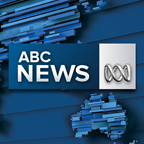
The deteriorating situation in Lebanon has drawn a particular focus in Australia with the widening conflict in the Middle East.
The government has urged an estimated 15,000 Australian citizens currently in Lebanon to leave.
But why does Australia have such a large diaspora from a relatively small country on the other side of the world, and a particular interest in what happens there?
The history of the Lebanese community in Australia can be traced back over 130 years and has evolved with waves of migration over time.
Early Lebanese community settled in regional areas
Youssef Taouk is a historian at the Australian Catholic University, and the president of the Australian Lebanese Historical Society.
He said early Lebanese Australians, largely Christian, fled the occupation of the area now known as Lebanon by the Ottoman empire in the late 1800s.
Many settled in rural areas, initially hawking goods purchased in the city before establishing more formal businesses.
Early Lebanese Australians began establishing themselves through hawking goods in regional areas. (Supplied: Queensland Historical Atlas)
"They would go hawking to sell things that they purchased in Sydney or Brisbane or Melbourne, in the countryside, and then they would just settle in the country town and establish themselves there," Dr Taouk said.
He said when the White Australia Policy came into force in the early 1900s, migration from Lebanon constrained, but that was relaxed in the 1920s.
The first significant wave of migration from Lebanon came after WWII as Australia opened the door to more migrants, enabling the community to grow from less than 5,000 in 1947 to around 25,000 by 1971.
Largest wave of migration during Lebanese Civil War
Dr Taouk said the most significant period of migration from Lebanon to Australia occurred as a result of the Lebanese civil war in the 70s and 80s.
Michael Humphrey researched the evolution of Australia's Lebanese population. (Supplied: University of Sydney)
When the war broke out in Lebanon in 1975, it's estimated 274,000 people were forced to flee the country as refugees.
Michael Humphrey is a sociologist at the University of Sydney and has also researched the evolution of Australia's Lebanese population.
He said a group of influential Lebanese Christian leaders campaigned to then-prime minister Malcolm Fraser and his government to grant visas to those fleeing the civil war.
They were granted a form of refugee status under a policy which became known as 'the Lebanon Concession'.
"There was an era which generated a kind of role of ethnic leaders and mediators the government, so some individuals played a role in drawing attention to the circumstances of their particular communities," Dr Humphrey said.
The Lebanon Ladies Maronite Ball at Wentworth Hotel in 1938. (Supplied: Museum of Applied Arts and Sciences)
That saw an influx of tens of thousands of Lebanese people to Australia, doubling the local population to 50,000 by 1981, which was largely centred in Sydney.
Dr Taouk said that wave was majority Muslim, while the pre-existing Lebanese Australian community was overwhelmingly Christian.
"The civil war affected everyone, Muslims and Christians, everyone was trying to flee the country," he said.
Majority of Lebanese Australians live in Sydney
Dr Taouk says the most significant period of migration from Lebanon to Australia occurred as a result of the Lebanese civil war. (ABC News: Sean Tarek Goodwin)
Today a quarter of a million Australians report Lebanese ancestry, according to the 2021 census.
More than 20 per cent of the country's Lebanese community lives in the Canterbury-Bankstown local government area (LGA) in Sydney's west.
Eight of the LGAs with the largest number of Lebanese Australians are in Western Sydney.
Two are in northern Melbourne, with the LGAs of Hume and Moreland also home to large populations.
Dr Taouk said Lebanese people concentrated around certain areas where they built religious institutions, community groups and local businesses.
"Traditionally, the Lebanese are fairly religious, so even today they still go out of their way to be around places of worship," he said.
Enduring connections to events in Lebanon
Dr Taouk said second and third generations of Lebanese Australians maintained a strong connection to their ancestral country, and an interest in its affairs.
"There's also a very strong sense of identity and connection, even if you're not born there, to your parents' or grandparents' country," he said.
A meeting of the Lebanese Maronite Society in 1934. (Supplied: State Library of NSW)
Ray Najar is the president of the Australian Lebanese Association, a group that runs charitable and community activities.
He said he was proud of the evolution of the community over time.
"A lot of the families that migrated here initially were not highly educated, so they wanted to make sure that their children were," Mr Najar said.
"Now you have lawyers, doctors, entrepreneurs in the building industry, a lot of public servants and quite a few politicians."
He said the community maintained an interest in events back in Lebanon and was watching intensely as devastation unfolds.
"We're powerless to be able to actually do anything except to appeal to the government," Mr Najar said.
"We can send money to our families, but that's never going to pay the bills for the destruction and damage that's going on."









 Add Category
Add Category